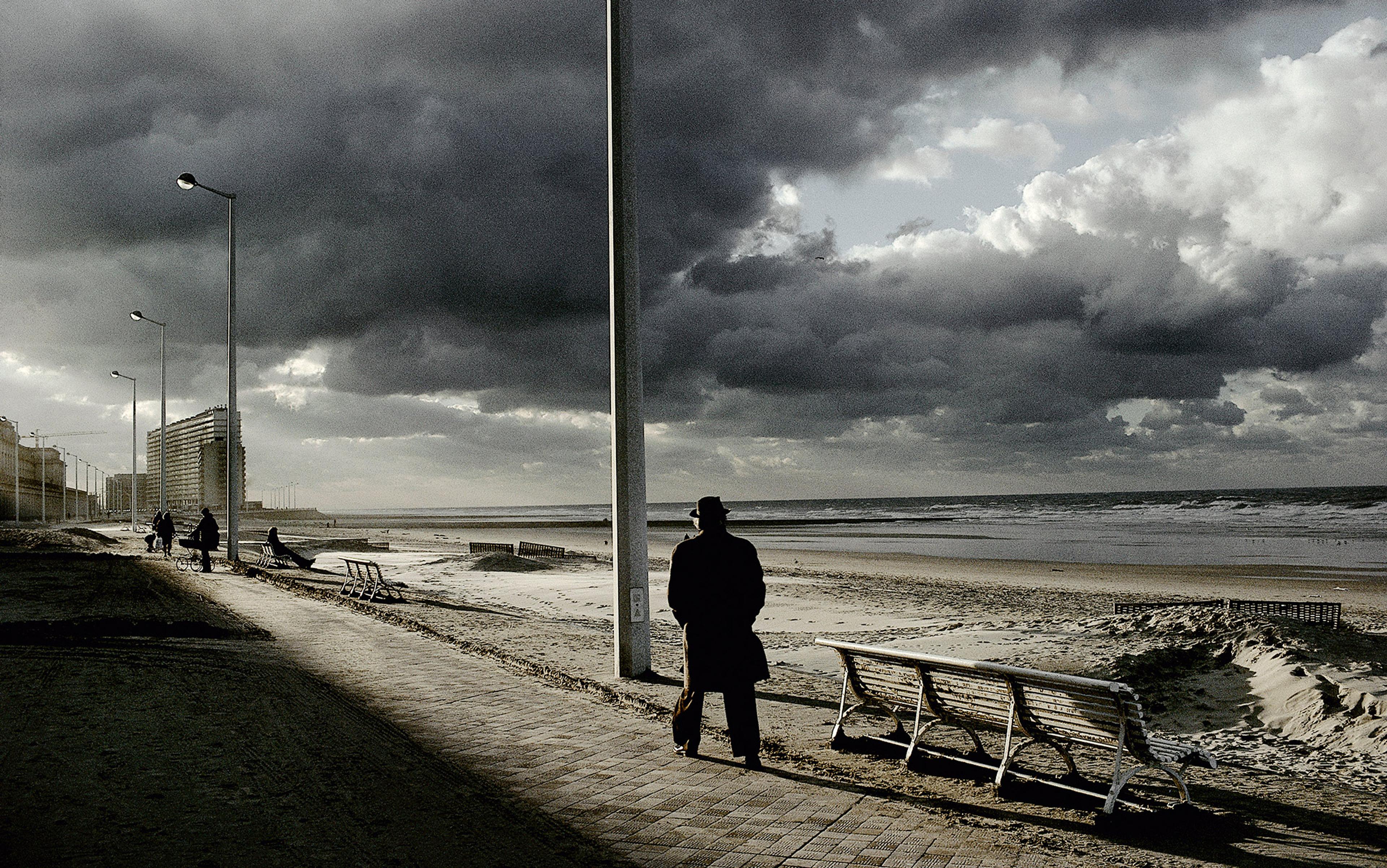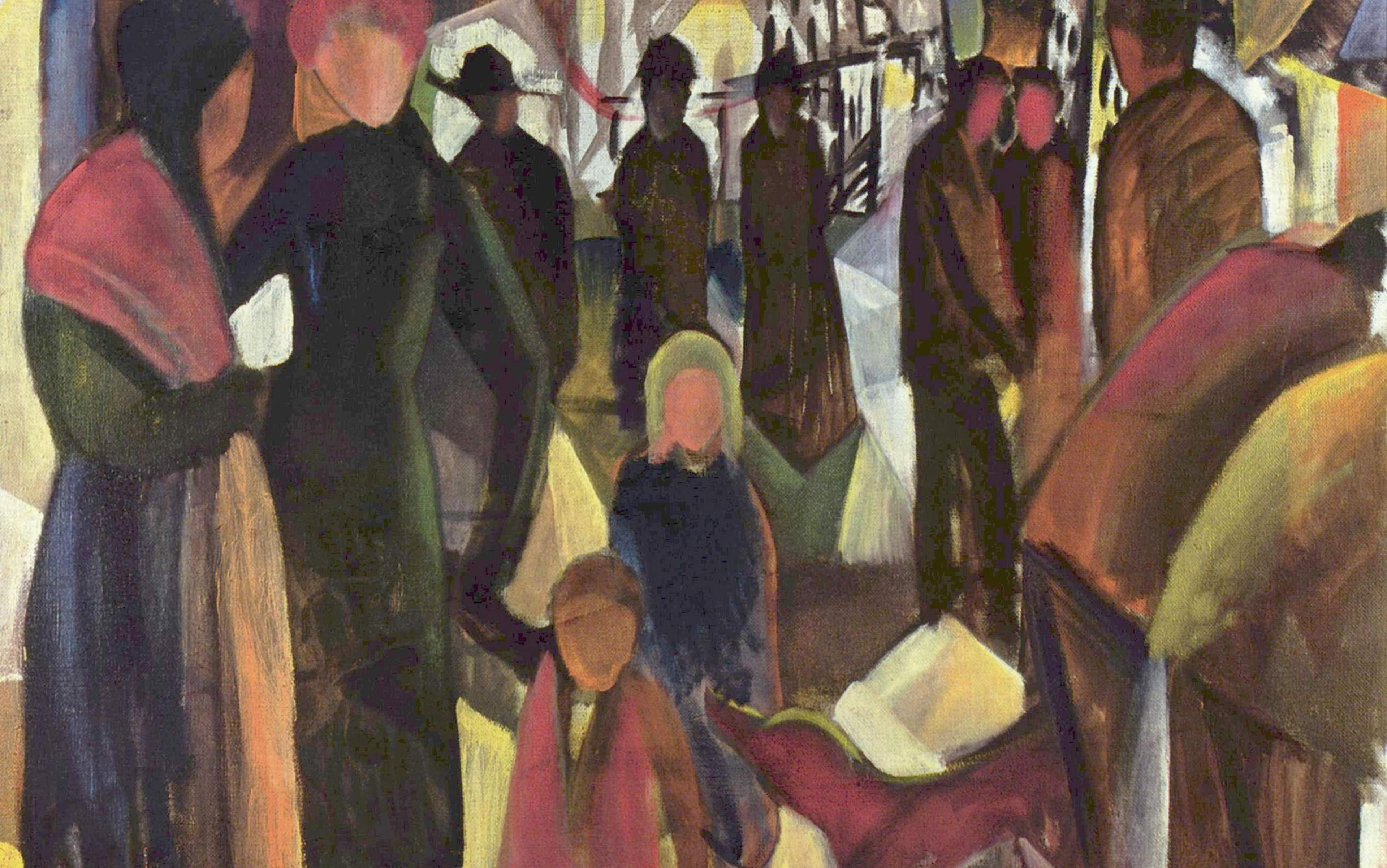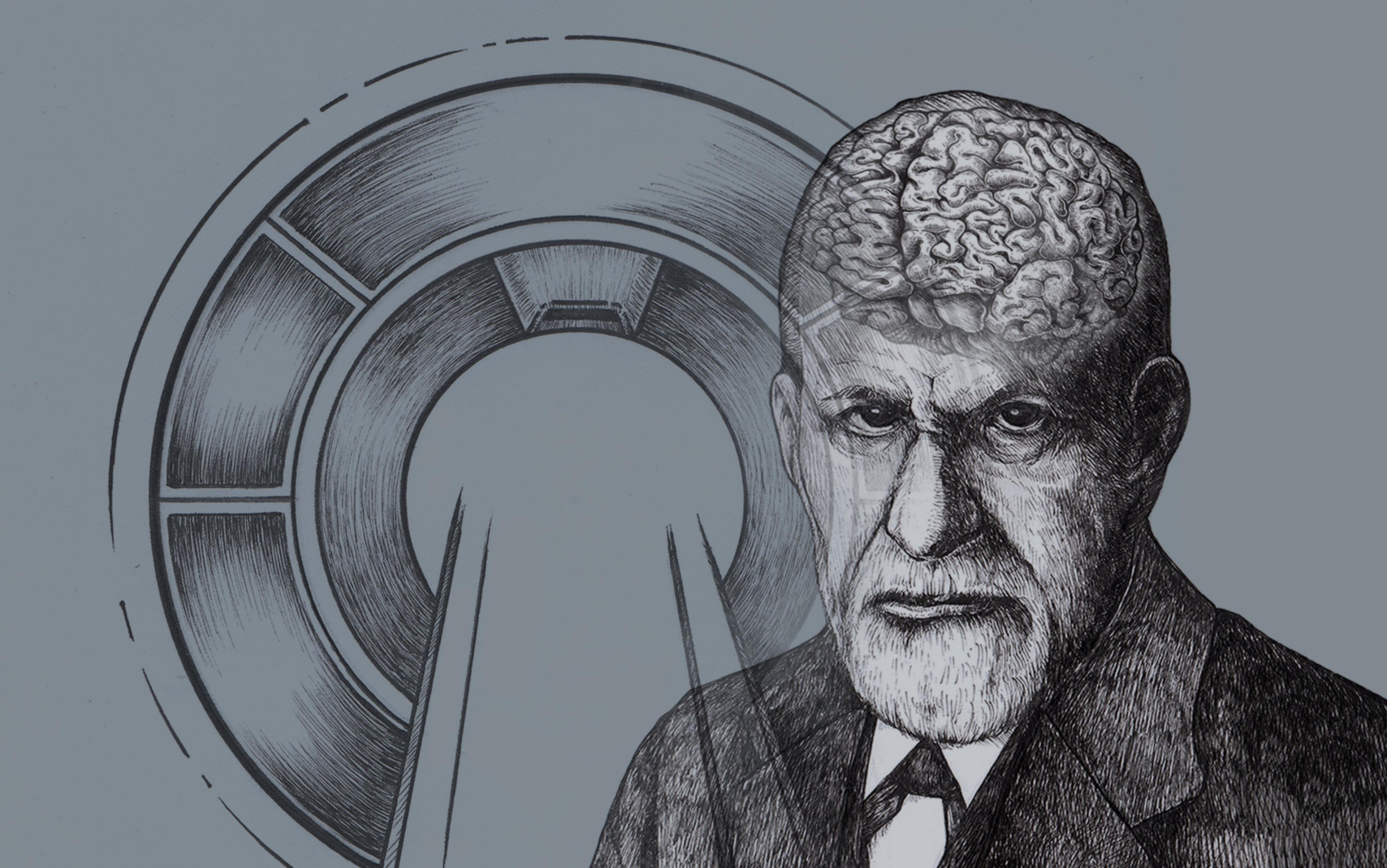I remember being depressed. It was a frightening state of mind that seemed to go on indefinitely. The very idea of waking up was riddled with dread. A state of internal turbulence, apprehension and negativity about the future propelled the total collapse of a positive and optimistic attitude. I felt like my mind suddenly became sick and twisted. I didn’t recognise my new self, and wondered what had happened to the cheerful person I used to be.
The reason for my depression was a breakup. But what led to depression was not so much the reaction to our split, but the realisation that the one you believed loved you, who was closest to you and promised to be with you forever, had turned out to be someone else, a stranger indifferent to your pain. I discovered that this loving person was an illusion. The past became meaningless, and the future ceased to exist. The world itself wasn’t credible any more.
In that state of depression, I found the attitude of others changed dramatically. Depression is not particularly tolerated in society, and I realised that those around me were of two persuasions. One group of people wanted to fix me, telling me to pull myself together or recommending professional help. The other group tended to shun me like a leper. In hindsight, I understand this reaction: after all, I had become cynical, agnostic and pessimistic, and I hadn’t bothered to be polite.
On the other hand, I developed a deeper understanding of the genuine suffering of others. In my depression, I learned about the dark side of the world, about which I knew little before. I could no longer ignore suffering and delusion, opening a new window on reality that was unpleasant indeed. My experience is not unique, but it was in some sense heightened because, in addition to being a regular human encountering a pathetic breakup, I’m also a philosopher. As a philosopher, I know that what seems to be obvious is far from always so, and therefore requires rigorous critical analysis. So, in the wake of my experience, I was especially inclined to doubt the equation of positive moods with health, and of negative moods with distortion. Could it be that, in my depression, I was finally seeing the world as it was?
Before my own descent, I’d been confused when my PhD mentor, the philosopher Alenka Zupančič at the Slovenian Academy of Sciences and Arts, suggested that the common striving for happiness constitutes a repressive ideology. What in the world could be wrong or repressive about the desire to make the world a happier place?
Yet, after observing myself, I came to agree with her. Look around and you’ll notice we demand a state of permanent happiness from ourselves and others. The tendency that goes together with overpromotion of happiness is stigmatisation of the opposite of happiness – emotional suffering, such as depression, anxiety, grief or disappointment. We label emotional suffering a deviation and a problem, a distortion to be eliminated – a pathology in need of treatment. The voice of sadness is censored as sick.
The American Psychological Association defines depression as ‘a common and serious medical illness that negatively affects how you feel, the way you think and how you act’. The very term stigmatises the sufferer and implies the need for her to be cured. It’s hard to say whether therapists and the medical establishment are imposing this attitude or are influenced by the prevailing cultural paradigm. Either way, most therapies today aim to eliminate negative moods.
What if reality truly sucks and, while depressed, we lose the very illusions that help us to not realise this?
The therapy best known for purging negative thoughts is cognitive behavioural therapy (CBT), originally formulated as a treatment for depression and anxiety. It is based on the cognitive model of mental illness, initially developed by the US psychiatrist Aaron Beck in the late 1960s. The premise is that depression is caused by a negative style of thought, called ‘depressogenic thinking’. When depressed, we tend to see ourselves as helpless, doomed, unlovable, deficient, worthless, blameworthy and rejected by others. Examples of this negative worldview can be exemplified by such expressions as ‘I’m worthless and ugly’, ‘No one values me’, ‘I’m hopeless because things will never change’, and ‘Things can only get worse!’ Beck suggests that in this depression we employ ‘distorted’ and unhelpful thinking patterns. CBT practitioners are trained to detect and break distorted thinking in order to set us in flight towards happier outcomes.
During my depression, under the influence of the friends I had left, I went to a CBT therapist. As you can see, I wasn’t completely cured and still find myself full of ‘depressogenic’ thinking. My feelings about the therapy varied, from a desire to trust myself and the care of the therapist to irritation at this very desire. I felt like I was told what I wanted to hear, like a child in need of comfort with a pleasant night-time story to get away from the harsh reality that was surrounding me. Depressogenic thoughts are unpleasant and even unbearable, but this doesn’t necessarily mean that they are distorted representations of reality. What if reality truly sucks and, while depressed, we lose the very illusions that help us to not realise this?
What if, to the contrary, positive thinking represents a biased grasp of reality? What if, when I was depressed, I learned something valuable, that I wouldn’t be able to learn at a lower cost? What if it was a collapse of illusions – the collapse of unrealistic thinking – and the glimpse of a reality that actually caused my anxiety? What if, when depressed, we actually perceive reality more accurately? What if both my need to be happy and the demand of psychotherapy to heal depression are based on the same illusion? What if the so-called gold standard of therapy is just a comforting pseudoscience itself?
Modern psychology recognises everyday thinking as largely biased, based on a number of distortions. But this recognition exists within the framework of positivity. In short, the mainstream embraces commonplace illusions as healthy as long as they don’t disrupt the positive flow.
The current concept of positive illusions first appeared in the 1980s in a paper by the psychologist Shelley Taylor of the University of California, Los Angeles, and Jonathon Brown at Southern Methodist University. Positive illusions are common cognitive biases based on unrealistically favourable ideas about ourselves, others, our situation and the world around us. Types of positive illusions include, among others, unrealistic optimism, the illusion of control, and illusory superiority that makes us overestimate our abilities and qualities in relation to others. Study after study indicates that such illusions are rife. Around 75-80 per cent of people evaluate themselves as being above average in almost all parameters: in academic ability, job performance, immunity to bias, relationship happiness, IQ. However, cruel mathematical laws tell us that this is an illusion – all, by definition, cannot be above average.
The roots of the modern positivity trend can be found in the religious past, which once provided people with guidelines for life and the notion of salvation, offering a solid picture of the world with a happy ending. In our secular world, psychology fills a void left by religion, serving to provide explanations and give hope for a better life. Replacing religion with psychology keeps many features of the Christian tradition, for instance, intact. The role of a counsellor or therapist, and our need to attend them, finds many analogies in the practice of a pastor and the tradition of confession. Both counsellor and pastor are figures with authority to claim what is wrong with you and tell you how to fix it. The French philosopher Michel Foucault (1926-84) traced the origin of psychotherapy to pastorhood, elaborating on the idea that the initial religious goal of pastoral care was to deliver the individual to salvation.
The contemporary Danish scholar Anders Dræby Sørensen points out that our modern aspiration to shed suffering and anxiety and, ultimately, to discover happiness is at least partially based on the religious idea of deliverance from worldly suffering to a heavenly condition. In the secularised world, salvation becomes a task that must be accomplished in our earthly life. Heaven is no longer about the transcendental realm, but about attaining a total state of happiness and transforming Earth itself into Heaven in the now.
Next to religion and its psychotherapeutic counterpart, philosophy could be considered heresy. The most problematic patient might be the German philosopher Arthur Schopenhauer (1788-1860), well known for his contention that suffering is unavoidable and a key part of human existence. Schopenhauer argued that there is no meaning or purpose to existence, and that life is moved by an aimless striving that can never be fulfilled. He turns our positive worldview upside down – the normal basic mode of our existence is not happiness that, from time to time, gets disrupted by suffering. Instead, life is itself a bone-deep suffering and endless mourning. It will never get better, Schopenhauer claimed: ‘It is bad today, and it will be worse tomorrow …’ Schopenhauer posits that consciousness further worsens the human condition, since conscious beings experience pain more acutely and are able to reflect on the absurdity of their existence. ‘I shall be told … that my philosophy is comfortless – because I speak the truth; and people preferred to be assured that everything the Lord has made is good,’ he wrote in the essay ‘On the Sufferings of the World’ (1851). ‘Go to the priests, then, and leave the philosophers in peace.’
For Freud, the goal was helping patients to accept and reflect on the hell that life is
The German philosopher Martin Heidegger (1889-1976) doesn’t provide much reassurance either. He referred to anxiety as a basic mode of human existence and distinguishes between authentic and non-authentic human forms of living. We mostly live inauthentically in our everyday lives, where we are immersed in everyday tasks, troubles and worries, so that our awareness of the futility and meaninglessness of our existence is silenced by everyday noise. We go to work, raise children, work on our relationships, clean the house, go to sleep, and do it all over again. The world around us seems to make sense, and is even richly meaningful. But the authentic life is disclosed only in anxiety. Then we become self-aware and can begin to think freely, rejecting the shared illusion that society has imposed. For Heidegger, anxiety represents a proper philosophical mood.
The Norwegian thinker Peter Wessel Zapffe (1899-1990) took philosophical pessimism even further. Human consciousness is tragically overdeveloped, he said, resulting in existential angst. In his essay ‘The Last Messiah’ (1933), Zapffe referred to it as ‘a biological paradox, an abomination, an absurdity, an exaggeration of disastrous nature’. Humans have developed a need that cannot be fulfilled, since nature itself is meaningless; to survive, he argues, humanity has to repress this damaging surplus of consciousness. This is ‘a requirement of social adaptability and of everything commonly referred to as healthy and normal living’.
Zapffe named four universal defence mechanisms humankind has developed:
- isolation, including repression of disturbing and destructive thoughts and feelings;
- anchoring, the establishment of higher meanings and ideals. The examples of collective anchoring he gives are: ‘God, the Church, the State, morality, fate, the law of life, the people, the future’. Anchoring provides us with illusions that secure psychological comfort. The shortcoming of anchoring is the despair we feel upon discovering that our anchoring mechanism is an illusion;
- distraction, the focusing of our thoughts and energy on a certain idea or task to prevent the mind from self-reflection; and
- sublimation, a type of defence mechanism in which negative urges are transformed into more positive actions. For instance, we distance ourselves from the tragedy of our existence and transform our awareness into philosophy, literature and art.
The father of psychoanalysis Sigmund Freud (1856-1939) was – like the philosophers – against religion, and claimed its purpose is to satisfy our infantile emotional needs. ‘Neurotics are a rabble, good only to support us financially and to allow us to learn from their cases: psychoanalysis as a therapy may be worthless,’ he reportedly told his colleague Sándor Ferenczi. Freud wasn’t optimistic about the outcome of psychotherapeutic treatment, and was reluctant to promise happiness as a result. In Studies on Hysteria (1895), he pledged that psychoanalysis could transform hysterical misery into ‘common unhappiness’. For Freud, the goal was helping patients to accept and reflect on the hell that life is. Not in any beyond, but here on Earth.
Despite its turn toward positivity, psychological theory includes one branch with a focus on the pessimistic philosophical tradition embraced by Freud himself. Called ‘depressive realism’, it was initially suggested by the US psychologists Lauren Alloy and Lyn Yvonne Abramson in a paper subtitled ‘Sadder but Wiser?’ (1979). The authors held that reality is always more transparent through a depressed person’s lens.
Alloy, of Temple University in Pennsylvania, and Abramson, of the University of Wisconsin-Madison, tested the hypothesis by measuring the illusion of control. After interviews with a set of undergraduates, they divided the students into depressed and nondepressed groups. Each student had a choice of either pressing or not pressing a button, and received one of two outcomes: a green light or no green light. Experimental settings presented the students with various degrees of control over the button, from 0 to 100 per cent. Upon completing the tests, they were asked to analyse the degree of control their responses exerted over outcome – that is, how many times the green light came on as a result of their actions. It turned out that, the sadder but wiser students were more accurate in judging the degree of control they exerted. Alloy and Abramson concluded that depressed students were less prone to illusions of control, and therefore showed greater realism. The nondepressed students, on the other hand, overestimated the degree of their control, and therefore were engaged in self-deception in favour of enhancing self-esteem.
The ‘depressive realism’ hypothesis remains controversial because it calls into question the tenets of CBT, which assert that the depressed individual has more thought biases and hence has to be healed in order to become more realistic. But subsequent studies have bolstered the idea. For instance, the Australian social psychologist Joseph Forgas and colleagues showed that sadness reinforces critical thinking: it helps people reduce judgmental bias, improve attention, increase perseverance, and generally promotes a more skeptical, detailed and attentive thinking style. On the other hand, positive moods can lead to a less effortful and systematic thinking style. Happy people are more prone to stereotypical thinking and rely on simple cliché. They are more likely to ‘go with the flow’ and are prone to making more social misjudgments on account of their biases.
Depressive rumination is a problemsolving mechanism that promotes analysis
Other researchers have looked at the evolutionary advantage of depression. For instance, Paul Andrews at Virginia Commonwealth University and J Anderson Thomson at the University of Virginia challenge the predominant medical view on depression as a disorder and biological dysfunction, and contend that it is, rather, an evolved adaptation. The evolutionary function of depression is to develop analytical thinking mechanisms and to assist in solving complex mental problems. Depressive rumination helps us to concentrate and solve the problems we are ruminating about.
Like a fever that can be scary in the moment but isn’t inherently bad, depression causes a decrease in functional wellbeing, impairing many domains of life, such as work, social relations and sexual life. However, though unpleasant, fever is not the product of biological malfunction. Rather, it is an important infection-fighting mechanism. The impairments that fever causes are the adaptive outcome of trade-offs in body systems needed to fight the infection. Similarly, depressive rumination is a problemsolving mechanism that draws attention to and promotes analysis of certain problems.
In her book Daseinsanalysis (2008), Alice Holzhey-Kunz, a modern, existentially oriented Swiss psychoanalyst, turns to Heidegger’s distinction between authentic and non-authentic forms of living. She claims that mental suffering signifies a disillusioning confrontation with the reality of existence. In that sense, depression is not so much a disorder as a disillusioning explosion of the nothingness of human existence. In this context, a cheerier form of what we might call ‘inauthentic living’ would hardly be a pathology since it counters acute existential awareness with everyday tasks and oblivion in the commonness.
Although the depression following my breakup doesn’t rise to the level of existential angst, it was the strongest perspective-shifting experience of my life. It irreversibly changed and traumatised me at the core of my being, and I am now generally sadder and more withdrawn than I used to be.
Alas, what if this is the cost of losing our illusions and learning infinitely more about reality itself? We might be getting there. Some studies suggest that existential suffering and mental distress is rising worldwide, but particularly in modern Western culture. Perhaps we chase happiness precisely because it is no longer attainable?
The vicious cycle in which we find ourselves – the endless pursuit of happiness and the impossibility of its attainment – hurts us only more. Perhaps the way out is actually accepting our raised level of consciousness. In our melancholy depths, we find that superficial states of happiness are largely a way not to be alive. Mental health, positive psychology and dominant therapy modalities such as CBT all require that we remain silent and succumb to our illusions until we die.
In closing, I must address you, my dear reader. I realise that, as you were reading this essay, you must have experienced a ‘yes, but…’ reaction. (‘Yes, life is horrible, but there are so many good things too.’) This ‘but’ is an automatic response to negative, horrifying insights. Once exposed to these forces, our positive defence mechanisms kick in. I myself was caught in the drill while writing this essay (and pretty much during the rest of my life). Without this protective measure, we would all probably be dead already, having most likely succumbed to suicide for relief.
A small proposal of mine would be to explore disillusionment and refuge from positivity as a new space to experience life, hopefully before a suicidal reaction follows. Next time, before you plunge into alcohol, or make appeals to loved ones, friends, psychotherapists or to any other of the many life-affirming practices, remember that almost all constructions of meaning – from work to sport to opening our hearts to Jesus – are inherently illusory. An alternative to running away from life through illusion is to explore an illusion-free space for as long as possible, so as to become more capable of bearing the reality of a disillusioned and concrete life. If successful, you’ll free yourself from your faux-positivity and your chains.
In the end, of course, we might not be able to liberate ourselves, either from suffering or from illusions. Life is hell, and it looks as though no heaven awaits us, to top it off. This, in itself, might be a path to liberation since, after all, we have nothing to lose.






